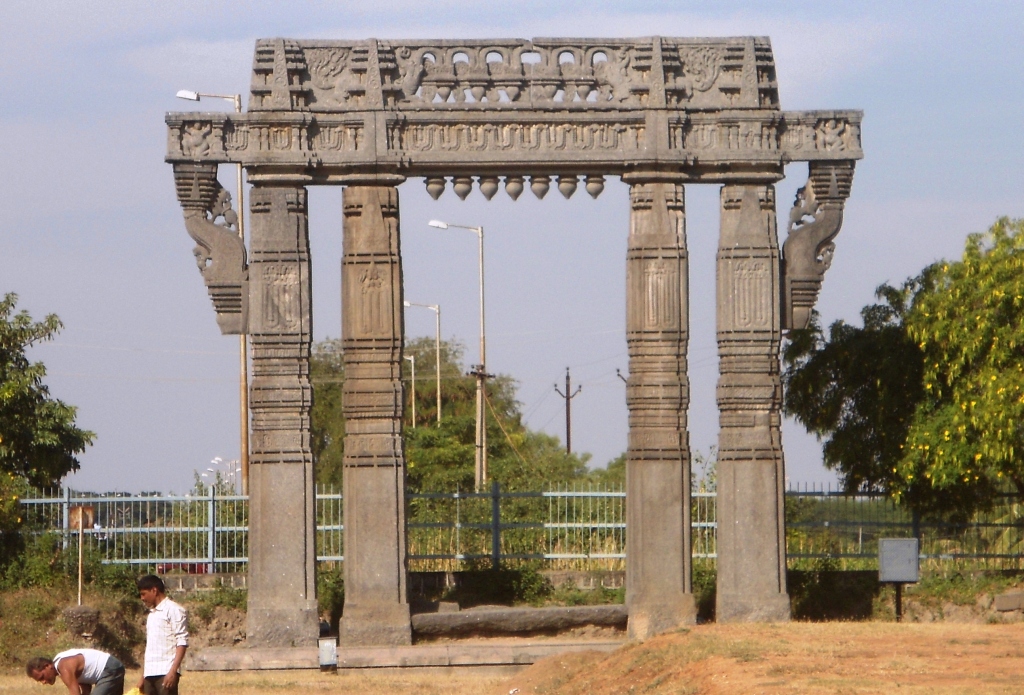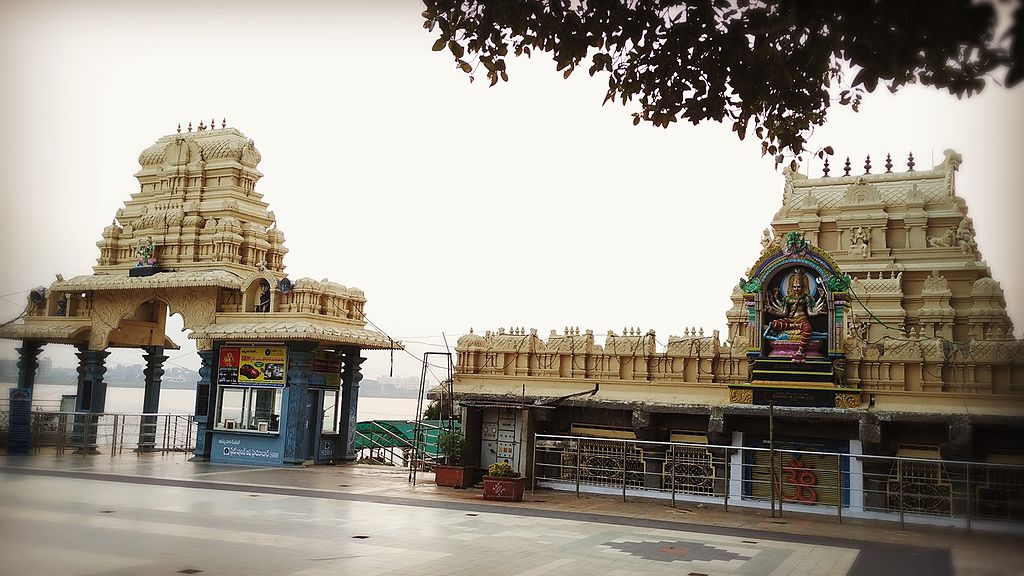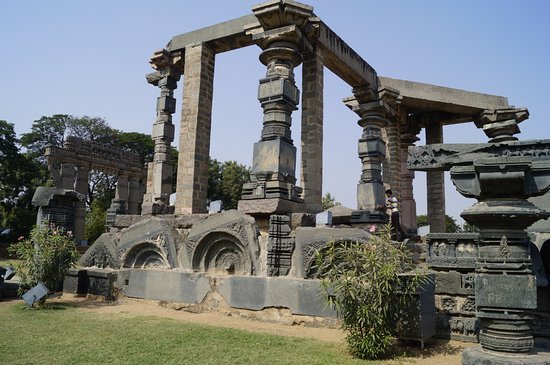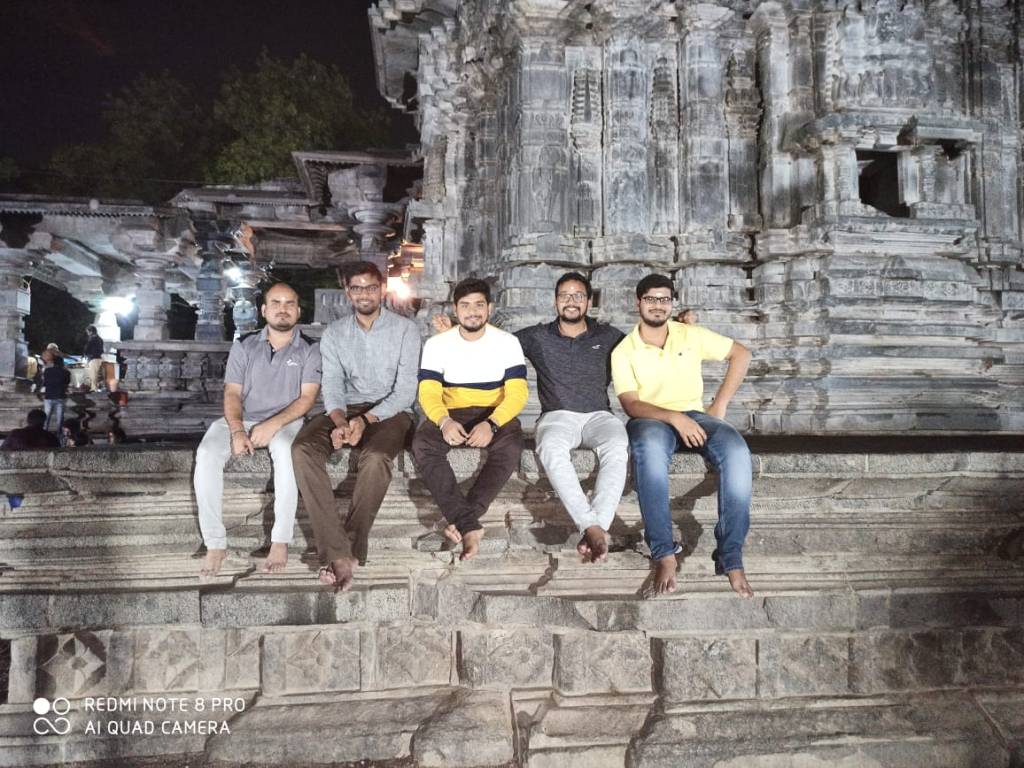Warangal,also known as Orugallu, and Ekasila Nagaram,is a city and a municipal corporation in Warangal district in the Indian state of Andhra Pradesh. Warangal is located 148 kilometres (92 mi) northeast of the state capital of Hyderabad and is the administrative headquarters of Warangal District. Warangal metropolitan area is a combination of three cities: Warangal, Hanamakonda and Kazipet.It has a population of nearly 1 million including Hanamakonda and Kazipet.
Geography and climate:
Warangal is located at 18.0°N 79.58°E. It has an average elevation of 302 metres (990 feet).
Located in the semi-arid Telangana region of Andhra Pradesh, Warangal has a predominantly hot and dry climate. Summers start in March, and peak in May with average high temperatures in the 42 °C (108 °F) range. The monsoon arrives in June and lasts until September with about 550 mm (22 in) of precipitation. A dry, mild winter starts in late November and lasts until early February. With little humidity and average temperatures in the 22–23 °C (72–73 °F) range, this is the best time to visit Warangal.
Demographics:
As of 2011 India census, Warangal had a population of 759,594. Males constitute 51% of the population and females 49%. Warangal has an average literacy rate of 84.16%, higher than the national average of 74.04%: male literacy is 91.54%, and female literacy is 76.79%. In Warangal, 11% of the population is under 6 years of age
Transport:
Air
The Mamnoor village, on the south-east outskirts of Warangal on Warangal Khammam Road, was used as a air force base and for glider training. This airport was the biggest airport in India till 1947 build by Hyderabad Nizams convenient for Kagaznagar Paper mill and Azam Jahi Mill. The nearest international airport is Rajiv Gandhi International Airport in Hyderabad located 160km away from Warangal.
Rail
Warangal is connected well to many major cities of India by rail. It falls under the South Central Railway zone of the Indian Railways. Kazipet Junction Railway Station in Kazipet, about 13 km from Warangal is a major railway junction on the Hyderabad-New Delhi-Vijayawada-Chennai-Kolkata route. Warangal Railway Station in Warangal is a station located on the Hyderabad-Vijayawada-Chennai-Kolkata route. Every day nearly 132 trains pass through this section apart from goods trains.It is one of the biggest Railway Junction in the country.
Road
National Highway 202 under construction from Hyderabad to Bhopalapatnam in Chhattisgarh passes through Warangal city.
There are two major bus stations in Warangal and Hanamakonda. Long-distance deluxe buses ply from Warangal to Bangalore, Madras, Hyderabad, Tirupathi, Anantapur, Hubli, and Belgaum; and standard express buses to Guntur via Vijayawada, Cherial, Jangaon, Kodad, Karimnagar, Nizamabad, Adilabad, Suryapet, Palampet, Jagtial, Mahabubabad, Narsampet, Parkal, Khammam, Bhadrachalam and Basar. Direct buses are available from Hyderabad to Warangal for every 15mins with a travelling time of 3 hours.
Education:
Warangal has educational institutions such as National Institute of Technology, Warangal and Kakatiya Medical College. Established in 1959 as the first of Regional Engineering Colleges in the country, the NIT grew into an important national level institute for engineering studies.
National Institute of Technology, WaranGal (formerly known as Regional Engineering College)
Kakatiya University
Kakatiya Medical College
Kakatiya Institute of Technology and Science (KITS)
There are several non-governmental organizations active in primary and secondary education in Warangal District. Of these, the best known are KITS, WITS, Rural Development Foundation and Institute for Technology and Management, Warangal (ITM Warangal)
Festivals:
The district hosts the Sammakka Saralamma Jatara or congregation bi-annually, and approximately 6 million people gather around the small village of Medaram and its adjacent stream/rivulet, Jampanna Vagu, 90 km from Warangal city for over three days. This fair is said to be the largest repeating aggregation of tribal communities in the whole world and commemorates the valiant fight put up by a mother and daughter (Samakka and Sarakka) with the reigning Kakatiya king over an unjust law. This is also the second biggest congregation in Asian continent after Kumbha Mela in India.
Places to see:
Take a trip to the once glorious Warangal Fort near Hanamkonda, erected by Ganapati Deva and his daughter Rudramma. Though the Warangal fort now lies in ruins, four huge stone gateways leading to the fort stand as testimony to the Kakatiyas’ architectural prowess. Perhaps a willing suspension of disbelief is all you need as you wander through the Warangal palace portals.
Close your eyes and enter the stone gateway at Warangal, and offer flowers at the crumbling Swayambhu temple, a shrine dedicated to Shiva. Then visit the three concentric shrines to Vishnu, Shiva and Surya in the Thousand Pillar Temple – another striking example of ornate Kakatiya architecture. King Rudradeva built this edifice at the base of Hanamkonda Hill. Shiva’s sacred bull, Nandi, carved out of black stone, guards the entrance and each pillar is intricately sculpted. The Bhadrakali Temple at the summit of Hanamkonda is a shrine to Goddess Kali in her battle glory, brandishing weapons in each of her eight arms.
Finally, cool off in front of the fountains at Warangal’s sprawling Musical Gardens. Or spend a lazy afternoon at the Vana Vignan Kendra, a park on Hunter Road.




